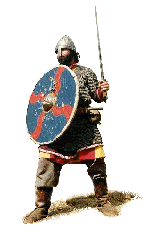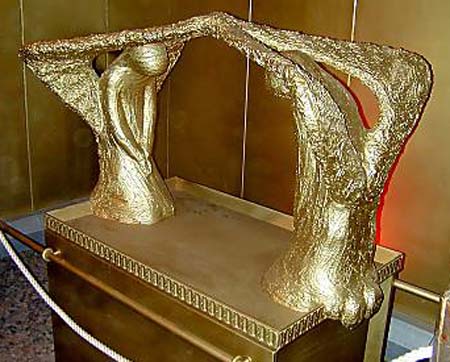A rich layer of finds from the latter part of the First Temple period (8th-6th centuries B.C.E.) has been discovered in archaeological rescue excavations near the Western Wall plaza. The dig is being carried out in the northwestern part of the Western Wall plaza, near the staircase leading up towards the Jaffa Gate.
The Israel Antiquties Authority has been conducting the excavations for the past two years under the direction of archaeologists Shlomit Wexler-Bdoulah and Alexander Onn, in cooperation with the Western Wall Heritage Foundation. The remains of a magnificent colonnaded street [i.e., lined by columns] from the 2nd century C.E. were uncovered; the street appears on the mosaic Madaba map, and is referred to by the name Eastern Cardo. The level of the Eastern Cardo is paved with large heavy limestone pavers that were set directly atop the layer that dates to the end of the First Temple period. This Roman road thus “seals” beneath it the finds from the First Temple period, protecting them from being plundered in later periods.
The walls of the buildings found in the dig are preserved to a height of more than two meters.
The seal's surface is divided into three strips separated by a double line: in the upper strip is a chain decoration comprising four pomegranates, and in the two bottom strips is the name of the owner of the seal, engraved in ancient Hebrew script. It reads: "[Belonging] to Netanyahu ben [son of] Yaush." Though each of the two names are not unfamiliar, no one with that name is known to scholars of the period.
A vast amount of pottery vessels was also discovered, among them three jar handles that bear similar stamped impressions. An inscription written in ancient Hebrew script is preserved on one these impressions, reading "Belonging] to the King of Hevron."
Here's a bit of trivia from IMDB.com:
Trivia for
Indiana Jones and the Kingdom of the Crystal Skull (2008)
Producer Frank Marshall stated that the film would be shot the same way as the previous three - with stunt men, and using CGI only when necessary.
M. Night Shyamalan and Tom Stoppard were each asked to pen a draft of the screenplay.
In April 2004, the project was supposedly shelved once more after George Lucas rejected the script by Frank Darabont earlier. Reportedly, Lucas did not like Darabont's handling of the storyline between Indy and his brother (both Indy's father played by Sean Connery and brother, a role for which Kevin Costner was rumored to be considered, were to have roles in the new movie). In media reports Darabont indicated he was "disappointed" with the decision.
At one point, Calista Flockhart was attached to the project.
Steven Spielberg brought on Janusz Kaminski, who's shot all Spielberg's films since Schindler's List (1993), to replace the now-retired cinematographer Douglas Slocombe, who had worked on all three of the previous Indy films. Spielberg refused to modernize the photography and wanted to retain the comic book style from the previous films; thus Kaminski had to watch all the three previous films repeatedly to study Slocombe's techniques. Spielberg later commented that both he and Janusz had to swallow their pride: "Janusz had to learn another cinematographer's look, and I had to acquire this younger director's look which I thought I had moved away from after almost two decades."
Stunt coordinator Vic Armstrong, who worked in all three of the previous Indy films, could not work in this film, as he was committed to The Mummy: Tomb of the Dragon Emperor (2008), so he was replaced with Dan Bradley. However, Steven Spielberg was able to meet Armstrong during War of the Worlds (2005) and talk about three action sequences he had conceived.
Sean Connery was approached for a cameo appearance as Henry Jones Sr., Indiana's father, but he turned it down, finding retirement too enjoyable. George Lucas later stated that in retrospect it was good that Jones Sr. did not appear, as it would disappoint the audience when he would not come along for the adventure. Harrison Ford also joked that he was getting old enough to play his own father, so Sean wasn't needed anymore.
Before ‘The Kingdom of the Crystal Skull’ was chosen as the title, several other titles were considered and even registered with the MPAA in August 2007, including ‘The City of Gods’, ‘The Destroyer of Worlds’, ‘The Fourth Corner of the Earth’, ‘The Lost City of Gold’, and finally, ‘The Quest for the Covenant’.
Shia LaBeouf revealed the movie's official title during his appearance at the MTV Video Music Awards 2007 (2007) (TV).
This is the first Indiana Jones film without Pat Roach, who had a role in the first three films. Roach died in 2004.
Shia LaBeouf signed on for the film in April 2007, so excited about doing an Indy film that he didn't even read the script. To prepare for his role as the greaser Mutt Williams, LeBeouf repeatedly watched the previous three Indiana Jones films and gained fifteen pounds of muscle.
To reprise his role as the legendary explorer Indiana Jones, the 64-year-old Harrison Ford spent three hours a day at the gym, and subsisted on a high-protein diet of fish and vegetables, thus building his body into a condition where he could perform his own stunts (he always kept himself fit anyway, as he hoped to complete all the five Indiana Jones films that were originally planned in the 1980s). Steven Spielberg later stated he was so impressed with Ford's form that he could not tell the difference between the shoots for the third and fourth films.
George Lucas cultivated an interest towards crystal skulls while producing "The Young Indiana Jones Chronicles" (1992), specifically during the episode with Harrison Ford's cameo. He felt the skulls, then an idea in an unused script, were as strong a plot device as the Ark of the Covenant from Raiders of the Lost Ark (1981). Steven Spielberg and Harrison Ford were sceptical, thinking the concept of crystal skulls too similar to the previous films, and two years were spent reworking it into something more acceptable.
In 2000, Steven Spielberg's personal interest for another Indy film was ignited when his son asked when the remaining two Indy films would be released.
When asked if Harrison Ford was too old to return as Indy, producer Frank Marshall quoted Raiders of the Lost Ark (1981): "It's not the years, it's the mileage." He explained that it would be interesting to see Indy in a different decade, and deal with all kinds of new and interesting things. The age also adds to Indy as a fallible and therefore believable character.
The US version of the teaser trailer was modified so you don't see any guns. In the international version the sight of the US flag was removed.
Steven Spielberg did not shoot the film in digital format, which his friend and partner George Lucas had adopted. Lucas approved, seeing that it looked, in his words, "like it was shot 3 years after the Last Crusade, you'd never know there was 20 years between shooting."
In 2006, Harrison Ford declared that if this film was not made by 2008, then the filmmakers should drop the idea altogether. This got Steven Spielberg looking for a good script immediately.
To be consistent with the previous films, Steven Spielberg shot the film using traditional stunts and kept the use of computer-generated imagery to an absolute minimum, although during filming he estimated about 30% of VFX would have to be CGI.
Steven Spielberg cast Russian actors in the roles of Russian soldiers so their accents would be authentic.
Steven Spielberg describes this film as "the sweet dessert I give those who had to chow down on the bitter herbs I used in Munich (2005)."
Screenwriter David Koepp looked at all the film's previous drafts, and kept what he felt were good ideas. He tried not to make his work a "fan script," avoiding any trivial references to the previous films. He noted that the story would have to acknowledge Ford/Jones's age, and also aimed for the mix of comedy and adventure from the first film, trying to make it less dark than the second film and yet less comic than the third film.
John Hurt wanted to read the script before he signed on. He had previously heard about actors who signed on to a Steven Spielberg film before reading the script, since "Spielberg -- you know, GOD -- was doing it!" Hurt replied, "'Well, I need to have a little bit of previous knowledge even if God is doing it." The filmmakers sent a courier with the script from Los Angeles over to London, who gave the script to Hurt at three in the afternoon, reclaimed it at eight that evening and flew back the following day.
 The Israel Antiquities Authority announces the first time in the history of the archaeological research of Jerusalem that building remains from the First Temple period have been exposed so close to the Temple Mount – on the eastern slopes of the Upper City.
The Israel Antiquities Authority announces the first time in the history of the archaeological research of Jerusalem that building remains from the First Temple period have been exposed so close to the Temple Mount – on the eastern slopes of the Upper City. 
